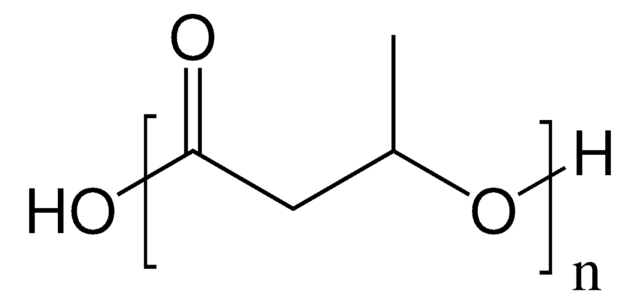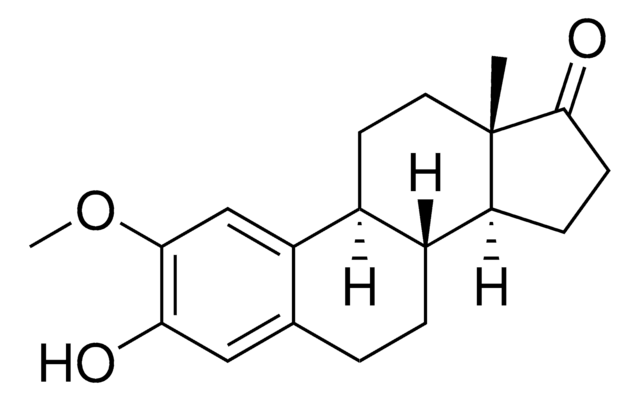Unfortunately, there is no molecular weight provided by the supplier for this product. The information is proprietary.
719846
Resomer® X 206 S, poly(dioxanone)
Sinonimo/i:
PDS
Scegli un formato
About This Item
Prodotti consigliati
Stato
solid
Livello qualitativo
Tempo di degradazione
<6 months
Viscosità intrinseca
1.5-2.2 dL/g, 0.1 % (w/v) in hexafluoroisopropanol(30 °C, Ubbelohde) (size 0c glass capillary viscometer)
Temp. transizione
Tg −10-−5 °C
Tm 110-115 °C
Temperatura di conservazione
−20°C
Stringa SMILE
O1CCOC(=O)C1
InChI
1S/C4H6O3/c5-4-3-6-1-2-7-4/h1-3H2
VPVXHAANQNHFSF-UHFFFAOYSA-N
Categorie correlate
Descrizione generale
Applicazioni
Note legali
Codice della classe di stoccaggio
11 - Combustible Solids
Classe di pericolosità dell'acqua (WGK)
WGK 3
Punto d’infiammabilità (°F)
Not applicable
Punto d’infiammabilità (°C)
Not applicable
Scegli una delle versioni più recenti:
Possiedi già questo prodotto?
I documenti relativi ai prodotti acquistati recentemente sono disponibili nell’Archivio dei documenti.
Articoli
Main features of p-dioxanone, glycolide and lactide based copolymers
Interest in utilizing biodegradable polymers for biomedical applications has grown since the 1960s.
AliAliphatic polyesters, including polylactide and polyglycolide, are biodegradable polymers widely used in medical applications.
Immunosuppressive tumor-associated myeloid cells (TAMC) are responsible for glioblastoma (GBM) resistance to immunotherapies and existing standard of care treatments. This mini-review highlights recent progress in implementing nanotechnology in advancing TAMC-targeted therapies for GBM.
-
What's the molecular weight ?
1 answer-
Helpful?
-
Active Filters
Il team dei nostri ricercatori vanta grande esperienza in tutte le aree della ricerca quali Life Science, scienza dei materiali, sintesi chimica, cromatografia, discipline analitiche, ecc..
Contatta l'Assistenza Tecnica.








